HAL Id: cea-02864469
https://hal-cea.archives-ouvertes.fr/cea-02864469
Submitted on 11 Jun 2020
HAL is a multi-disciplinary open access
archive for the deposit and dissemination of
sci-entific research documents, whether they are
pub-lished or not. The documents may come from
teaching and research institutions in France or
abroad, or from public or private research centers.
L’archive ouverte pluridisciplinaire HAL, est
destinée au dépôt et à la diffusion de documents
scientifiques de niveau recherche, publiés ou non,
émanant des établissements d’enseignement et de
recherche français ou étrangers, des laboratoires
publics ou privés.
Distributed under a Creative Commons Attribution| 4.0 International License
Needs of accurate prompt and delayed γ-spectrum and
multiplicity for Nuclear Reactor Designs
G. Rimpault, D. Bernard, D. Blanchet, Claire Vaglio-Gaudard, S. Ravaux, A.
Santamarina
To cite this version:
G. Rimpault, D. Bernard, D. Blanchet, Claire Vaglio-Gaudard, S. Ravaux, et al.. Needs of accurate
prompt and delayed γ-spectrum and multiplicity for Nuclear Reactor Designs. Physics Procedia,
Elsevier, 2012, GAMMA-1 Emission of Prompt Gamma-Rays in Fission and Related Topics, 31, pp.3
- 12. �10.1016/j.phpro.2012.04.002�. �cea-02864469�
Physics Procedia 31 ( 2012 ) 3 – 12
1875-3892 © 2012 Published by Elsevier B.V. Selection and/or peer-review under responsibility of Institute for Reference Materials and Measurements.
doi: 10.1016/j.phpro.2012.04.002
GAMMA-1 Emission of Prompt Gamma-Rays in Fission and Related Topics
Needs of accurate prompt and delayed
γ-spectrum and
multiplicity for Nuclear Reactor Designs
G. Rimpault
a*, D. Bernard
a, D. Blanchet
a, C. Vaglio-Gaudard
a, S. Ravaux
a,
A. Santamarina
aa CEA, DEN/DER/SPRC, Cadarache, F-13108 Saint Paul Lez Durance, France * Corresponding author: gerald.rimpault@cea.fr
Abstract
The local energy photon deposit must be accounted accurately for Gen-IV fast reactors, advanced light-water nuclear reactors (Gen-III+) and the new experimental Jules Horowitz Reactor (JHR). The Ȗ energy accounts for about 10% of the total energy released in the core of a thermal or fast reactor. The Ȗ-energy release is much greater in the core of the reactor than in its structural sub-assemblies (such as reflector, control rod followers, dummy sub-assemblies). However, because of the propagation of Ȗ from the core regions to the neighboring fuel-free assemblies, the contribution of Ȗ energy to the total heating can be dominant. For reasons related to their performance, power reactors require a 7.5% (1ı) uncertainty for the energy deposition in non-fuelled zones. For the JHR material-testing reactor, a 5% (1s) uncertainty is required in experimental positions.
In order to verify the adequacy of the calculation of γ-heating, TLD and γ-fission chambers were used to derive the experimental heating values. Experimental programs were and are still conducted in different Cadarache facilities such as MASURCA (for SFR), MINERVE and EOLE (for JHR and Gen-III+ reactors). The comparison of
calculated and measured γ-heating values shows an underestimation in all experimental programs indicating that for the most γ-production data from 239Pu in current nuclear-data libraries is highly suspicious.
The first evaluation priority is for prompt Ȗ-multiplicity for 235U and 239Pu fission but similar values for other actinides such as 241Pu and 238U are also required. The nuclear data library JEFF3.1.1 contains most of the photon
production data. However, there are some nuclei for which there are missing or erroneous data which need to be completed or modified.
A review of the data available shows a lack of measurements for conducting serious evaluation efforts. New measurements are needed to guide new evaluation efforts which benefit from consolidated modeling techniques.
© 2011 Published by Elsevier Ltd. Selection and/or peer-review under responsibility of the organizer
Keywords: nuclear data needs, accuracy, SFR, Gen III+, JHR, gammas
Available online at www.sciencedirect.com
© 2012 Published by Elsevier B.V. Selection and/or peer-review under responsibility of Institute for Reference Materials and Measurements.Open access under CC BY-NC-ND license.
1. Introduction
γ are emitted by interaction of the neutrons with the matter, the most important interactions being fission, the radiative capture and inelastic scattering. The number of emitted γ depends on the type of interaction, of the incidental neutron energy and the target core. By radioactive decay of the fission products or by activation, there is also γ emission which depends on time and called "delayed emission".
γ are propagated several centimeters before being absorbed. The most important interactions are the photoelectric effect, the Compton diffusion and the production of pairs.
Note that γ are neutral particles that can be treated like neutrons. Methods used for calculating of the neutron flux can hence be used to calculate the γ flux and consequently the γ energy deposition (with the help of KERMA (Kinetic Energy Release in MAterials).
The γ-energy accounts for about 10% of the total energy released in the core of a thermal or fast reactor. The γ-energy release is much greater in the core of the reactor than in its structural sub-assemblies (such as reflector, control rod followers, dummy sub-assemblies). However, because of the propagation of γ from the core regions to the neighboring fuel-free assemblies, the contribution of γ energy to the total heating can be dominant; at least in positions close to the core.
For instance, the γ−heating in a center of a typical fast reactor core [1] comes from several components, roughly:
• 20% from the γ produced in radiative capture • 40% from the prompt γ emitted by fission fragments • 30% from the delayed γ produced by fission products • 10% from the inelastic scattering reactions.
In chapter 2, the detailed reason for which the local energy photon deposit must be accounted accurately is very associated to the novel features of advanced light-water nuclear reactors (Gen-III+), Gen-IV fast reactors and the new experimental Jules Horowitz Reactor. The required target accuracy of 7% (1σ) is very much linked to the performance of these power reactors. The technology is guiding the required uncertainties. For the not-fissile zones, too much flow to cool these zones and the by-pass of the core reduce the efficiency while not enough coolant flow and there is a risk that materials loose their integrity. There are also the mixtures in top of the heart between coolants of various temperatures. Reducing further the uncertainty is not necessary since other sources of uncertainty such as operating or technological uncertainties (constructive) or coming from other disciplines, which would then become dominant. For the Jules Horowitz Reactor, the requested uncertainty is 5% for being able to characterize in a refined way the heat in the experimental locations.
In chapter 3, experimental programs were and are still conducted in different Cadarache critical facilities such as MASURCA (for SFR), MINERVE and EOLE (for JHR and Gen-III+ reactors) in order to verify the adequacy of the calculation of γ-heating. Various TLD and γ-fission chambers are used to derive the experimental heating values.
The results of the computational tools used to analyze these experiments are dependent on the nuclear data evaluation being used. A review of the current status on γ-spectrum and multiplicity nuclear data evaluations is performed in chapter 4.
The paper (chapter 5) concludes on the need to conduct new differential measurements to guide new evaluation efforts with the help of improved nuclear data modeling. Also, efforts within critical facilities need to be pursued in order to verify that target accuracies are within control.
G. Rimpault et al. / Physics Procedia 31 ( 2012 ) 3 – 12 5
2. Data needs and accuracy required on prompt and delayed γγγγ spectrum and multiplicity.
PWRs are the dominant nuclear reactors in the world. Although their designs have been settled for long, novel features are being added so that reactors can achieve:
• Safer behavior even in very improbable events
o adding monitors within the reactor vessel to keep more closely control of the core, o adding burnable poisons such as UO2-Gd2O3 pins,
o adding a core catcher to keep within the containment vessel any radioactive materials even in case of core melting,
• Longer life time in particular, by being able to replace easily some components or increase their lifetime when they cannot be replaced (core vessel for instance which lead to the introduction of heavy reflectors).
To reduce neutron leakages and flatten the power distribution, the space between the polygonal core and the cylindrical core barrel is filled with a heavy neutron reflector. The stainless steel heavy reflector surrounds the core, and is made of a stack of rings keyed together and axially restrained by tie rods bolted to the core support plate. The heat generated inside the steel structure by absorption of gamma radiation (Figure 1) is removed by the primary coolant through holes and gaps provided in the reflector structure.
Figure 1: Deposited energy per neutrons and γ at different distances from the PWR core center Also, in order to reduce damage to reactor vessel and extend their lifetime, Gen-III+ reactors i.e. advanced thermal reactors exhibit heavy steel reflectors for which similar knowledge of gamma-heat deposition is required. In these reactors, burnable poisons (typically, Ag, In, Cd, Gd and Hf) are used to extend the fuel residence time. The energy deposition in these materials has to be calculated accurately.
The high performance required for future SFR calls for very innovative core characteristics compared with conventional fast-reactor designs, which in turns; give rise to new challenges in neutronics methods and data. Presently, the criteria for designing Gen-IV reactors lead to cores using steel or ceramic
reflectors without UO2 blankets. Therefore, it becomes important to calculate precisely the gamma-heat
deposition in these materials (Figure 2) as well as in control-rod followers or dummy sub-assemblies (Figure 3). For instance, a 7.5% (1σ) uncertainty is required for the energy deposition in non-fuelled zones of Gen-IV fast reactors [2].
Figure 2: Contribution to deposited energy of γ-production in core and steel reflector
Figure 3: Contribution to deposited energy of γ-production in core and steel diluent
The experimental Reactor Jules Horowitz (JHR), expected to start in 2016 at Cadarache will feature experimental devices in its central part and in peripheral locations. The objectives of the experimental devices are the production of artificial radio-elements and the testing of fuels and materials (cladding, internals). The γ produced close to fuel elements account for more than 90% of the total heating of the
G. Rimpault et al. / Physics Procedia 31 ( 2012 ) 3 – 12 7
experimental devices [3]. For the γ-heating produced in experimental locations placed at the periphery, the situation is more complex given the presence of Beryllium to increase the flux level (Figure 4).
Figure 4: Peripheral layout of the JHR
Stakes of well-controlled uncertainties for JHR γ-heating prediction is required in terms of safety and performance:
• Design/technology of experimental devices
• γ-heating in aluminum structure for beryllium reflector • γ-heating in Hafnium control rods
• Core heat balance
Ȗ-heating needs to be known with a good accuracy and according to the designers, a 5% (1ı) uncertainty is required.
3. Discrepancies between integral measurements and calculations of γγγγ-heating
The PERLE experiment (Figure 5) was performed in the EOLE facility between 2007 and 2008. It is designed to verify the physics parameters associated to the heavy reflector [4].
The core is composed of standard PWR 3.7% 235U enriched UO2 fuel pins, with Zircaloy-4 cladding. In
order to pattern an analytical 1D fuel/reflector interface, the PERLE configuration is composed of a regular 27 × 27 square core. The 1.32 cm lattice pitch allows for a representative PWR spectrum. The square core is surrounded by a 22 cm thick stainless steel block. The positive reactivity worth of the heavy reflector is over 5600 pcm. The core is placed in the center of the EOLE inner vessel ∅120 cm. Three blocks are hollowed (Figure 1) on the main median plane, down to the core mid-plane so measurement devices can be inserted, such as fission chambers or activation foils. These holes can be filled with SS rods of the correct diameter when no measurements are foreseen, to ensure the uniformity of the SS material. Different types of measurements were foreseen for this experiment so as to obtain information on parameters for the characterization of the core and the reflector, such as:
• residual reactivity,
• pin-by-pin radial power map, • flux attenuation in the reflector, • γ heating in the reflector.
Figure 5: PERLE experiment in the EOLE facility (left); SS heavy reflector hollowed out to insert measurement devices (right)
PERLE Experiments in EOLE have been conducted recently and analyses are still in progress.
In order to verify the adequacy of the calculation of γ-heating in fast reactors, the CIRANO and the BALZAC experimental programs in the MASURCA facility have been performed. TLD and γ-fission chambers were used to derive the experimental heating values with rather low uncertainties of about 6%. The comparison of calculated and measured γ-heating values has shown a significant underestimation by about 10% in the PuO2/UO2 core region, by 16% in the reflector and by 11% in the diluent zone [1].
G. Rimpault et al. / Physics Procedia 31 ( 2012 ) 3 – 12 9
There is a discrepancy of 10% within the core, which can only be due to prompt γ-production. The discrepancy of 15% in the reflector is initially due to prompt γ production and then to (n,γ) capture.
For the JHR project, γ-heating measurements (TLD irradiations) of the experimental program ADAPh have been performed in the UO2 core of the MINERVE reactor in 2005 repeated in 2010 with reduced uncertainty.
Figure 7: The ADAPh experimental setting in the MINERVE facility
ADAPh experiments in the MINERVE facility in support to JHR are elementary ones and are preparing the AMMON [5] experiments in the EOLE facility more representatives of the JHR core features.
Various TLD types have been used such as LiF TLD700, CaF2, LiF MTS7 and Al2O3 and then show
similar trends although with more or less accuracy.
The comparison between calculated and measured γ-ray absorbed doses in TLD shows a large underestimation in both cores MINERVE UO2 in the ADAPh experiment: C/E=0.72 ± 7.5% (1σ) and
EOLE MOX: C/E=0.75 ± 7.5% (1σ) [3]. At this time, the systematic bias observed was attributed to deficiencies in γ-production data in the evaluated file. As 235U is the most important contributors in prompt γ production in the MINERVE UO2 core, a deep analysis of this isotope data is required. Similarly
to fast systems, the EOLE MOX core is indicating that γ-production data from 239Pu in current nuclear-data libraries is highly suspicious.
Measurement technique has been revisited over the past two years, in order to improve the measurement accuracy [6]. These new measurements were performed in the MINERVE UO2 core and the
analyses are still in progress.
A new integral experiment dedicated to JHR assembly physics, called the AMMON experiment, began in 2010 and is currently performed in EOLE. The objective is to provide experimental data for the qualification of neutron calculations on the main safety and design parameters such as criticality, power map, absorber reactivity worth and gamma heating. Several configurations are foreseen for the 2-year experimental program: a reference configuration (called AMMON/REF), a hafnium configuration (with a JHR assembly containing a hafnium absorber), a beryllium configuration (with a beryllium block replacing an assembly) and a voided configuration (with a voided JHR assembly). γ-heating will be measured in media such as aluminum, hafnium and beryllium.
4. Prompt fission γγγγ-production data in nuclear-data libraries
In the most recent nuclear-data libraries, γγγγ-production data for the prompt γ emitted in fission are described in file MF12 (γ-multiplicity) along with the file MF15 (point wise description of the spectrum). Redundant information can be found in file MF1 - MT458 (components of energy release due to fission). A quick inspection of the recent libraries, JEFF3.1, ENDF/B-VI.8 and JENDL3.3, shows that evaluated data are based on rather old measurements of the photon spectrum of 235U [7, 8] and of 239Pu [8, 9]. In general, the same spectrum shape is chosen for every fissile isotope. The total energy Eγ and multiplicity Nγ are also based on measurements or simple systematics. No incident-neutron energy dependence is described in any existing nuclear-data libraries.
4.1. Overview of existing differential measurements
The prompt γ-spectra have been measured for the main fissile isotopes in the early 70’s. Table 1 summarizes the measurements that can be found in the open literature.
Based on the existing measurements, some systematics have been derived by Hoffman et al. [12] and Frehaut et al. [13] to predict the total γ-energy and multiplicity as a function of fissioning-nuclei mass.
Table 1 illustrates the significant dispersion of the experimental values and demonstrates the high uncertainty (~15%) that should be assigned to the total prompt γ-energy. More recent measurements have been performed on 252Cf [14, 15] to get the spectrum shape versus fission-fragments mass, unfortunately, the total γ-energy or the number of γ was not reported. Nevertheless, these measurements are of great importance to check the modeling of the fission process and fragment decay.
More recently, cerium-doped lanthanum halide crystal scintillation detectors have been used at the cold-neutron source of the 10 MW Budapest Research for the measurement of the prompt-ray emission spectrum in the 235U (n,f) reaction [16].
G. Rimpault et al. / Physics Procedia 31 ( 2012 ) 3 – 12 11
Table 1. γ measurements in open literature Isotope Total energy MeV Total Multiplicity Average Energy MeV Energy Range MeV Reference 233U 6.69 ± 0.3 6.31 ± 0.3 1.06 ± 0.07 0.09-10.0 [9] 235U 6.43 ± 0.3 6.51 ± 0.3 0.99 ± 0.09 0.09-10.0 [9] 6.51 ± 0.4 6.70 ± 0.3 0.97 ± 0.05 0.14-10.0 [7] 7.18 ± 0.3 7.45 ± 0.3 0.96 ± 0.05 0.14-10.0 [8] 7.25 ± 0.3 8.13 ± 0.3 0.89 ± 0.05 0.01-10.5 [8] 7.25 ± 0.3 8.13 ± 0.3 0.89 ± 0.05 0.01-10.5 [8] 239Pu 6.73 ± 0.35 6.88 ± 0.4 0.98 ± 0.07 0.09-10.0 [9] 6.81 ± 0.3 7.23 ± 0.3 0.94 ± 0.05 0.14-10.0 [7] 252Cf 7.06 ± 0.3 8.32 ± 0.4 0.85 ± 0.06 0.09-10.0 [9] 6.84 ± 0.3 7.80 ± 0.3 0.88 ± 0.04 0.14-10.0 [7] 8.6 10 0.90 ± 0.06 [10] 6.7 ± 0.4 [11] 4.2. Modeling issues
Over the past 20 years, an important effort has been done to predict the γ-production data for radiative capture and inelastic scattering process and is summarized for instance in the CRP report of IAEA [17]. However, very little work has been devoted to the prompt γ produced by fission. So far, a tractable model (such as the Madland-Nix model for prompt neutrons) is not available for evaluation purposes and evaluators have to rely on the old measurements described in the previous section.
The main issue is to be able to predict the excitation-energy and spin distribution of the fission fragments. Even with the most sophisticated fission theories, these quantities are not accurately predicted as a function of fragment mass and charge. Furthermore, a rigorous modeling requires treating the decay of the fission fragments and the neutron-γ emission by a statistical model. This approach [18] requires the knowledge of a great number of nuclear parameters of highly deformed nuclei (level density, transmission coefficient for gamma and neutron and so on.).
More recently, a complex model based on spin-dependant statistical de-excitation of individual primary fragments is in progress with the FIFRELIN code [19]. This model requires a great number of nuclear parameters related to individual primary fragments (especially spin and excitation energy) that are not well known and is a rather lengthy calculation. All these issues emphasize the needs for accurate measurements.
5. Conclusion
As illustrated by the generation-IV design objectives and the JHR project, a better accuracy on γ-heating prediction is required by nuclear-reactor analysts. Integral measurements performed in thermal and fast mock-up have demonstrated a significant underestimation of the total γ-heating that deserves a deeper understanding.
One of the major sources of uncertainty comes from prompt γ emitted in fission. The data found in modern nuclear-data libraries are still based on experiments performed in the early 70’s and a high uncertainty is expected on quantities like total γ-energy or multiplicity. To reduce the present uncertainties, the total energy, multiplicity and the spectrum shape of prompt photons emitted in fission needs to be accurately measured. The priority is to measure 235U and 239Pu at thermal and fast
incident-neutron energies. The required accuracy is 7.5% for the γ energy and the multiplicity. A more important effort should be also devoted to the modeling of these quantities.
The prompt γ from the fission of 235
U, 239Pu, and to a lesser extent 241Pu contribute predominantly to the total γ-energy release in thermal or fast cores fueled with either uranium oxide (UOx) or mixed oxide (MOx).
The characteristics of γ (multiplicity, total energy and spectrum shape) produced by radiative capture and inelastic scattering require improvement for some specific materials (Gd for instance). However, the γ from the fission process remains the major source of uncertainty in the prediction of γ-heating.
References
[1] A. Lüthi, R. Chawla, and G. Rimpault, Nucl. Sci. Eng. 138 (2001) 3.
[2] G. Rimpault, Proceedings of the Workshop On Nuclear Data Needs for Generation IV, April 2005, Antwerp, Belgium.
[3] D. Blanchet, Proc. of M&C 2005 International Topical Meeting on Mathematics and Computation, Supercomputing, Reactor Physics and Nuclear and Biological Applications , September 12–15, 2005, Palais Des Papes, Avignon, France.
[4] C. Vaglio-Gaudard, A. Santamarina, P. Blaise, G. Noguere, J.M. Ruggieri, J.F. Vidal, A. Lyoussi, “The interpretation of the PERLE experiment using Monte Carlo calculations”, Nucl. Sc. and Eng., 166, 89-106 (2010).
[5] J.C. Klein, N. Thiollay, J. Di Salvo, J.C. Bosq, P. Sireta, J.P. Wieryskov, P. Alexandre, D. Garnier, “AMMON: an experimental program in the EOLE critical facility for the validation of the Jules Horowitz Reactor neutron and photon HORUS3D calculation scheme”, Proc. Int. Conf. IGORR 2009, Beijing, China, October 28-30 (2009).
[6] H. Amharrak, J. Di Salvo, A. Lyoussi, A. Roche, M. Masson-Fauchier, J .C. Bosq, M. Carette, « Analysis and recent advances in gamma heating measurements in MINERVE facility by using TLD and OSLD techniques », ANIMMA2011, Ghent, Belgium (2011).
[7] V. V. Verbinski et al., Phys Rev C7, 1173 (1973).
[8] R.W. Pelle and F.C. Maienschein, Phys. Rev. 3, 1, 373 (1971). [9] F. Pleasonton et al. Phys. Rev. C6, 1023 (1972).
[10] H. R. Bowman and S.G. Thomson, Proc. 2nd International Conference on Peaceful uses of Atomic Energy, Vol. 15, 212 (1958).
[11] E. Nardi, A. Gavron and Z. Faenkel , Phys. Rev. C8, 2293 (1973). [12] Hoffman and Hoffman, Ann. Rev. Nucl. Sci. 24 (1974).
[13] J. Frehaut, “IAEA consultants meeting physics of neutron emission in fission”, Mito, Japan (1988).
[14] F.J. Hambsch, J. van Aarle and R. Vogt, “XIII Meeting on physics of Nuclear Fission”, Obninsk (1995).
[15] P. Glassel et al. , Nucl. Phys. A502 (1989).
[16] S. Oberstedt, Specific Applications of Research Reactors: Provision of Nuclear Data, IAEA JRC-EC, EU.
[17] INDC(NDS)-412 Dec.199.
[18] O. T. Grudzevitch, Phys. At. Nucl., Vol. 64, No.1 (2001). [19] Litaize O., Serot O., Phys. Rev. C82, 054616 (2010).
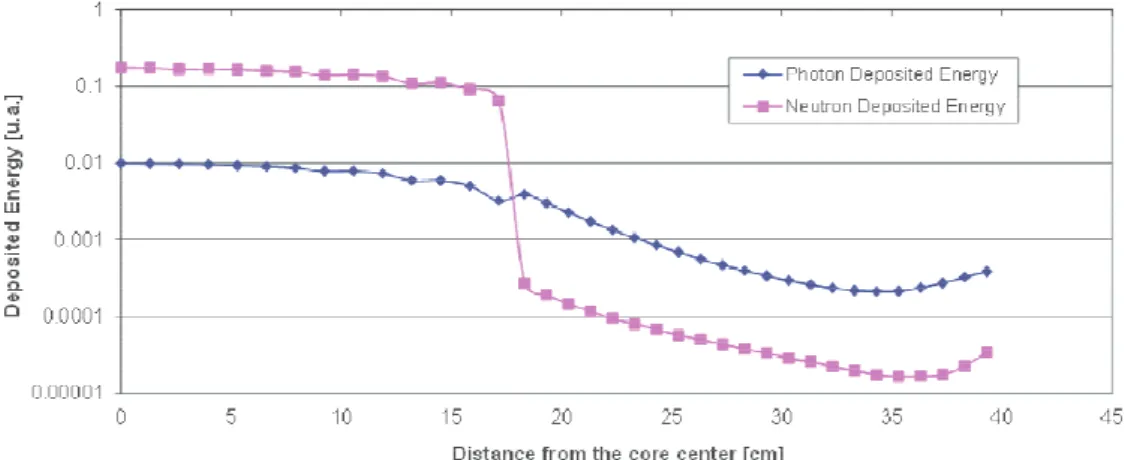
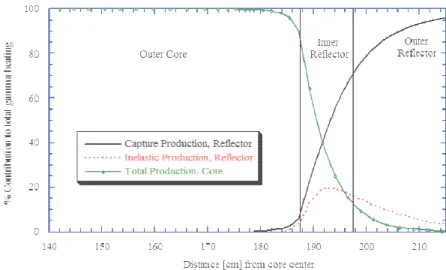
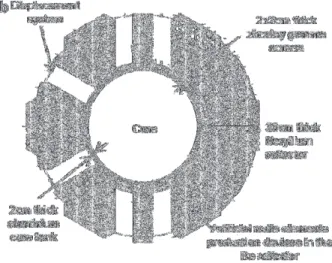
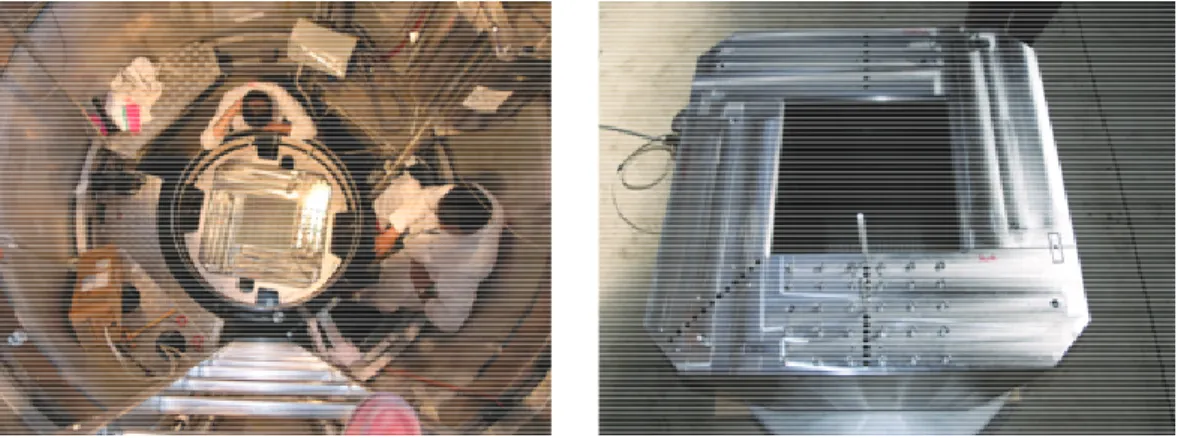
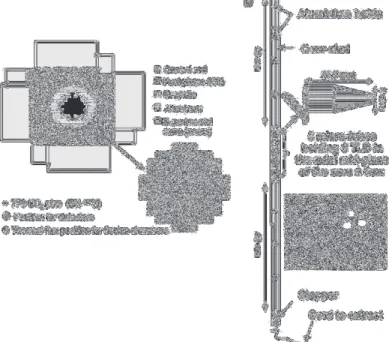
![Table 1. γ measurements in open literature Isotope Total energy MeV Total Multiplicity Average Energy MeV Energy Range MeV Reference 233 U 6.69 ± 0.3 6.31 ± 0.3 1.06 ± 0.07 0.09-10.0 [9] 235 U 6.43 ± 0.3 6.51 ± 0.3 0.99 ± 0.09 0.09](https://thumb-eu.123doks.com/thumbv2/123doknet/12939387.374890/10.816.94.704.125.361/measurements-literature-isotope-multiplicity-average-energy-energy-reference.webp)